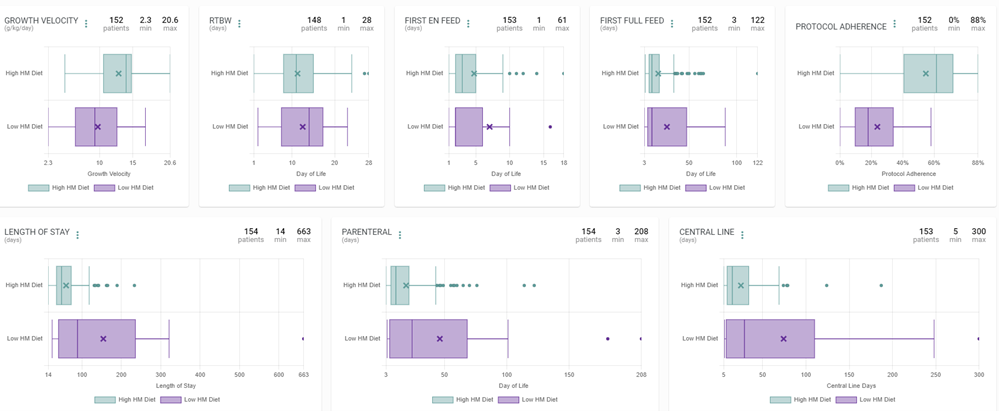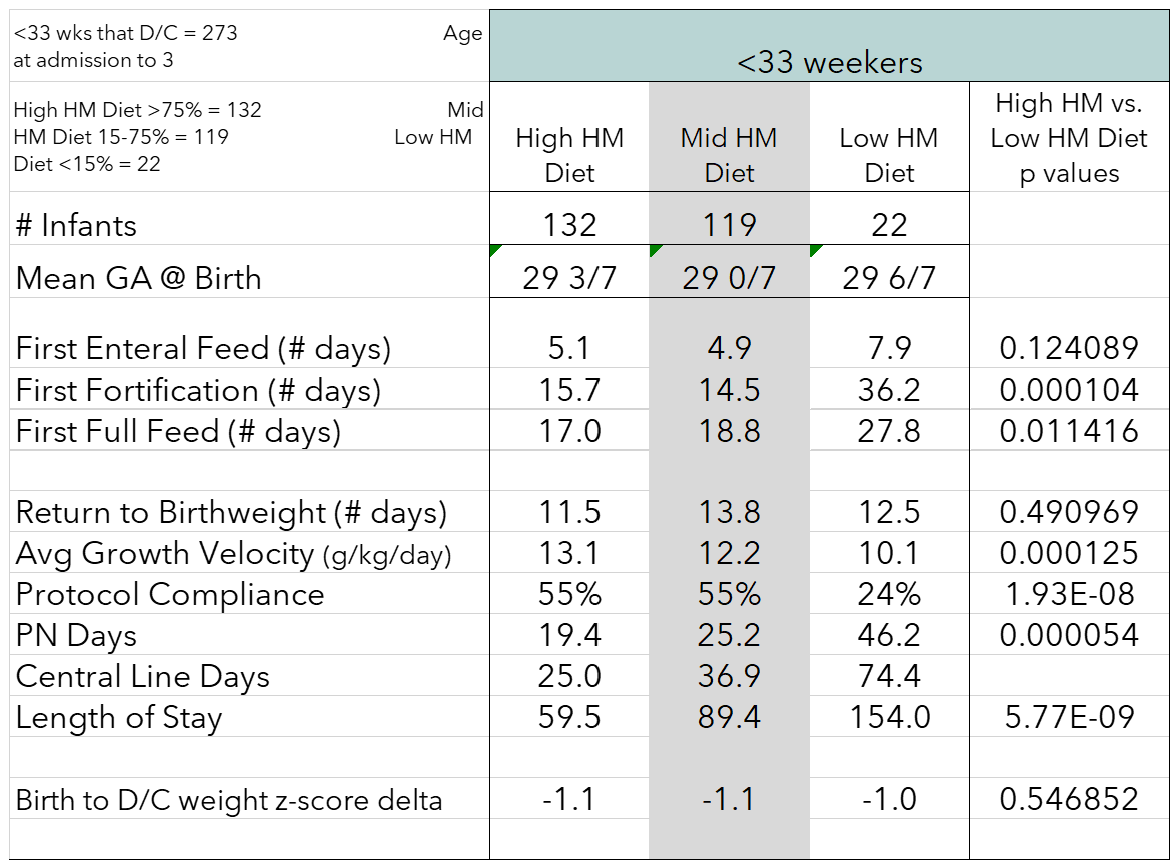Neonatal Fetal Nutrition & Metabolism
Neonatal GI Physiology & NEC 4: Gut Health, Enteral Nutrition and Oral Feeding
88 - Evaluating High Human Milk vs. Low Human Milk Diets in Preterm Infants Using Digital Tools
Publication Number: 88.236
- NR
Nicholas Rowley, MD (he/him/his)
Resident
University of Arkansas for Medical Sciences College of Medicine
Little Rock, Arkansas, United States
Presenting Author(s)
Background:
As survival of preterm infants improves, attention is focused on optimizing nutrition management. Studies have shown that human milk (HM) is the best source of nutrition for preterm infants, conferring short and long-term health benefits such as protecting against gut infections. HM contains hormones, nutrients, and growth factors that help the preterm infant grow and develop. HM is not always available for every feeding, and there is no practical way to evaluate a high HM diet versus a low HM diet and the correlated outcomes.
Objective:
This work aimed to extract 5 years of feeding and nutrition data from the electronic health record (EHR) using secure Fast Healthcare Interoperability Resources Application Programming Interfaces (FHIR APIs), a standard for exchanging private health information. A proprietary nutrition IQ framework was applied to imported data to interpret outcomes, growth metrics, and adherence to enteral feeding protocols.
Design/Methods:
Inclusion criteria of admission by 3 days and < 33 weeks estimated gestational age (EGA) that discharged from NICU identified 273 infants. 3 cohorts based on the percentage of their enteral diet that came from HM were created. Cohort 1 diet contained more than 75% HM (132), cohort 2 diet contained 15% to 75% HM (119), and cohort 3 diet contained less than 15% HM (22).
Results:
Comparing cohort 1 to cohort 3 showed a trend toward improvement in earlier initiation of enteral feeding and return to birthweight (RTBW). Cohort 1 demonstrated clinically and statistically increased growth velocity (13.1g/d vs 10.1g/d), a decrease in days to fortification (15.7 vs 36.1) and first full feed (17 vs 27.8). Protocol adherence was significantly better in cohort 1 versus cohort 3 (55% vs 24%). Days on parenteral nutrition (PN) (19.4 vs 46.2), central line days (25.0 vs 74.4), and length of stay (59.5 vs 154) were less in cohort 1 compared to cohort 3 (Table 1).
Conclusion(s):
Preterm infants receiving high HM diets are significantly more likely to remain on track with feeding protocols and reach full enteral feeding faster. This outcome is most likely associated with improved feeding tolerance and lower occurrence of adverse events. Low HM diet infants had substantially longer hospitalization likely as a consequence of a low HM diet. This dose dependent effect of percent human milk in the diet on preterm infant outcomes has been discussed elsewhere in the medical literature; however, further investigation on the optimal dose of HM, length of exposure to HM, and source of HM would further understanding of preterm nutritional needs. 

